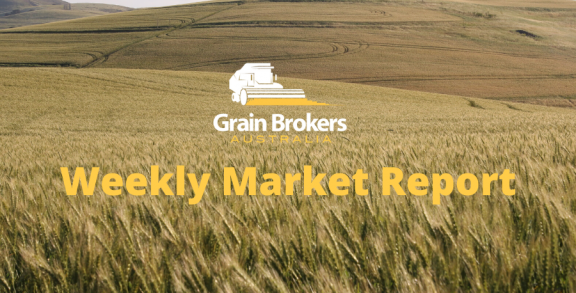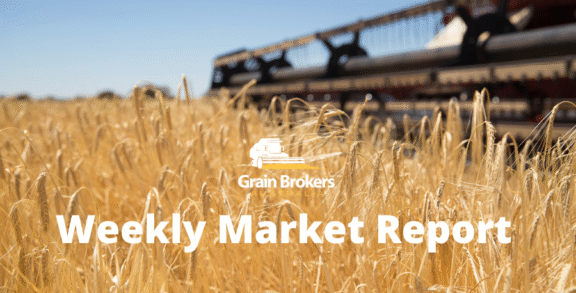
It appears that eighteen months of uncertainty for Australian barley growers regarding the outcome of China’s anti-dumping and countervailing duties investigations may be about to end in tears. China’s Ministry of Commerce (MOFCOM) is reported to be close to announcing exorbitant tariffs on all barley imports from Australia as a result of their prolonged inquiry.
The news comes as farmers across the country are busy planting this season’s winter crop and arrives too late for any material change in planting intentions. Barley is traditionally Australia’s second-biggest winter cereal, by area and volume, after wheat, and a large proportion of this season’s 4.5 million hectare crop has already been planted.
Beijing announced the probe on November 19, 2018, after the China International Chamber of Commerce complained that Australian barley was being subsidised by the government, allowing it to enter the Chinese market in large volumes and at discounted prices, hurting domestic producers.
According to a joint press release from Australian agricultural industry groups, Beijing is proposing two, supposedly yet to be finalised, tariffs. An anti-dumping margin of 73.6 per cent and a subsidy margin of 6.9 per cent. That is a total of 80.5 per cent and would make it almost impossible for Australia to compete with alternate barley origins into the valuable Chinese market.
The information released by MOFCOM over the weekend raises a whole myriad of questions, the answers to which the Australian barley industry can only guess. When will the tariffs be imposed? Will they be immediate or commence at some future date? Will cargoes currently on the water be exempt?
And probably the most burning question. Will it cover both malting and feed barley? Will the Chinese government find a way to impose the tariffs but continue to buy Australian malting barley? Chinese brewers and maltsters, many of which are semi-government operations, rely on Australian malting barley as the quality of domestic production is not suitable, and freight from alternative origins such as France is much higher.
The domestic grains industry, in conjunction with the Australian government, have been given ten days to respond, with MOFCOM expected to release their final determination on May 19, 2020. This will be exactly eighteen months after the commencement of the investigation, the maximum allowable period under World Trade Organisation rules.
The threat of sanctions by MOFCOM come at a time when relations have frayed between Canberra and Beijing, aggravated by the Australian government push for an investigation into the origins of the coronavirus outbreak.
If China follows through with the imposition of the proposed tariffs, then it places a huge question mark over Australia’s barley exports for the balance of this season and the current forecasts for exports to China in 2020/21.
In recent years, Australia has been China’s largest supplier of barley with the grain going into both the brewing and stockfeed markets. In the 2017/18 Australian marketing year (October 2017 to September 2018) China imported almost 6.5 million metric tonnes (MMT) of Australian barley.
This was valued at more than AU$2.2 billion and accounted for around 75 per cent of China’s barley imports in that period. Though still significant, the volume dropped substantially in the 2018/19 season, to a tad over 2.0MMT, or around AU$700 million, as the anti-dumping investigation made it difficult for consumers to acquire import permits.
China is still Australia’s biggest export barley customer this season with around 1.0MMT shipped to the end of April. Second on the list of destinations by volume is the Queensland domestic market, with transhipments, predominantly from South Australia and Western Australia, into the port of Brisbane totalling more than 0.9MMT. Next is Thailand at just over 0.4MMT and then Japan at 0.2MMT.
With an excellent soil moisture profile throughout News South Wales, Victoria and South Australia and promising rainfall across many parts of Western Australia last week, most of the Australian barley crop is being planted on time and into favourable soil conditions.
That means Australia is looking at a barley crop of at least 10MMT. If farmers manage to plant all of their intended area in those states and we get an above-average winter and spring, then production of 12MMT is quite achievable. This would give Australia an exportable surplus in the 6-8MT range, well up on this season’s number.
In the absence of China, one of the first destinations domestic exporters will look to is Saudi Arabia. In particular, the Arabian Gulf, where Australia has a freight advantage compared to Black Sea exporters. The latest tender price into Dammam was US$207 cost & freight (C&F). With freight of US$19 out of Western Australian ports and the Aussie dollar at US$0.65, that equates to AU$289 free on board (FOB) or around AU$262 free-in-store (FIS).
New crop Black Sea barley was reportedly bid US$170 last week. With shipping to the Arabian Gulf around US$29, that equates to a delivered price of US$199 C&F. Using the freight and currency numbers above, that works back to AU$277 FOB or AU$250 FIS Western Australia. Ex South Australia that would be a grower bid of about AU$230.
The other alternative for volume barley exports will be to displace corn into feed rations throughout Asia. While that is possible at current prices, there is a huge corn harvest coming off in South America at the moment, the northern hemisphere corn crop will be big if all goes well and COVID-19 has decimated global demand. On that basis, it is unlikely global corn values will hold current levels as we move closer to the Australian harvest.
It is hard to understand what has driven the Chinese decision, and we will have to wait until May 19 to find out the full details. However, with the potential for a substantial Australian barley crop this season, any erosion of demand or closure of traditional markets will be detrimental for grower bids unless the Aussie dollar comes to the rescue.
Call your local Grain Brokers Australia representative on 1300 946 544 to discuss your grain marketing needs





